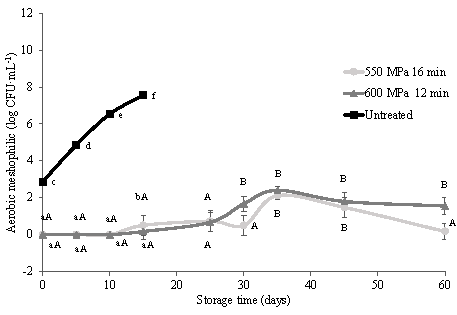 |
|
This work focuses on HHP and storage effects on pectin methylesterase (PME) activity, native microflora, and the physicochemical, nutraceutical, and sensory properties of non-acidified pitaya juice. After 550 and 600 MPa treatments for 16 and 12 min, respectively, pitaya juice was stored 60 d at 4±1°C. No aerobic mesophiles were found immediately after HHP treatments, and during storage, counts remained below 2 Log10 CFU mL‑1. In HHP‑treated juice, yeast and molds were undetectable and remained so during storage. After HHP treatments and during storage, no changes were observed in total soluble solids (9.8‑10.0 °Bx), luminosity (4.3‑4.4 %), and chroma (18.9-20.7). Depending on treatment condition, HHP lowered PME activity by 59-63 %. A further reduction reaching 25 % was observed after storage. Acidity, phenolic compounds, betalains concentrations, and antioxidant activity were not affected by HHP but a 43, 10, 14, and 5 % decrease, respectively, was observed after 60 d of storage. Finally, sensorial acceptability of juices was not affected by HHP but increased during storage reflecting an increased sweetness perception associated with lower acidity values. HHP is thus a viable alternative to produce non-acidified pitaya juice with a 60‑d refrigerated distribution shelf life.
Keywords: antioxidant, pitaya juice, sensory quality, refrigerated storage.
|
|
 |

